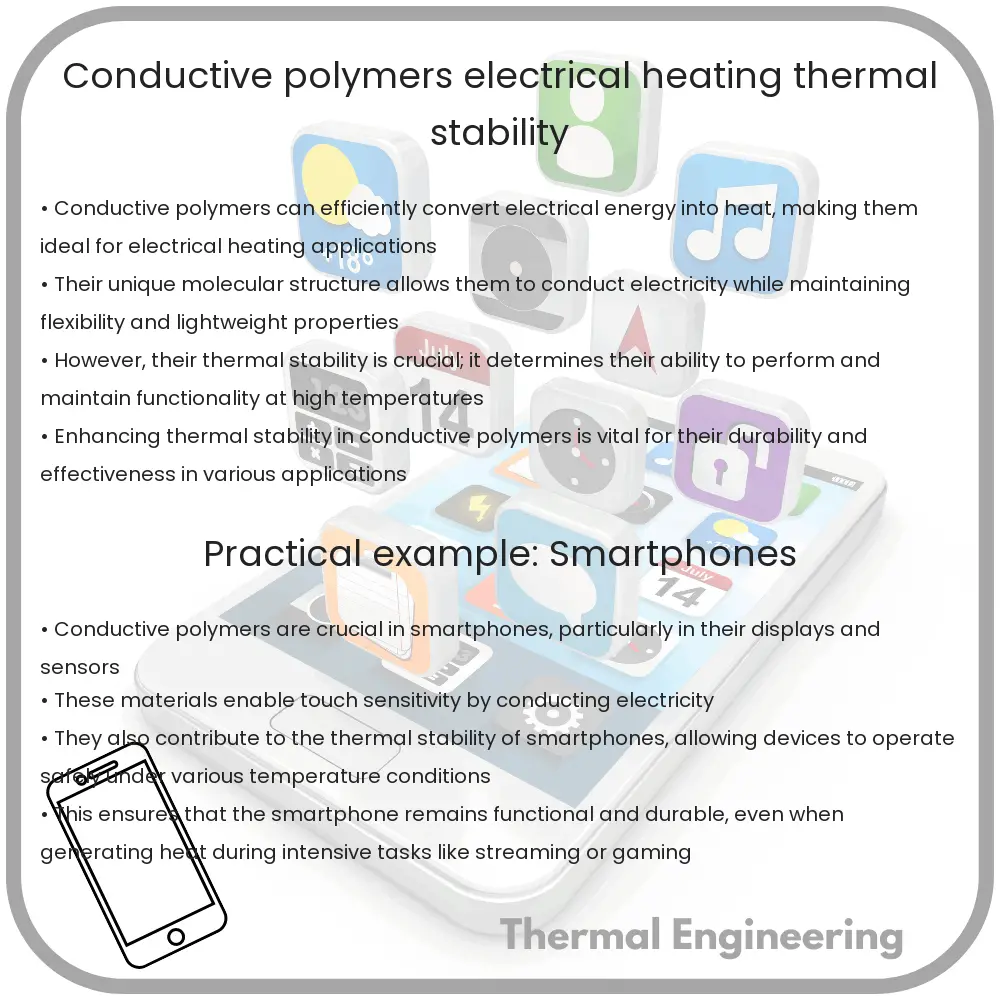Explore the unique properties and applications of conductive polymers, materials merging polymer flexibility with electrical conductivity for use in electronics, heating, and more.

Introduction to Conductive Polymers
Conductive polymers are a unique class of materials that combine the electrical properties of metals or semiconductors with the flexible, lightweight attributes of polymers. These materials are increasingly significant in various applications, including sensors, batteries, solar cells, and flexible electronic devices.
Electrical Heating in Conductive Polymers
One of the remarkable applications of conductive polymers is in electrical heating systems. These polymers can conduct electricity when a voltage is applied, leading to resistive heating due to the flow of electrical current. This characteristic makes conductive polymers suitable for creating flexible heating elements that can be embedded in textiles or used in devices that require uniform heating over complex shapes.
- The heating effect is primarily governed by Joule’s Law, which states that the heat generated in a conductor is proportional to the square of the current times the resistance (P = I2R).
- Conductive polymers can be engineered to have specific electrical resistances, allowing precise control over the heating level.
- The flexibility of these materials enables integration into wearable technologies, such as heated garments or medical therapeutic devices.
Thermal Stability of Conductive Polymers
Thermal stability is a critical factor in the performance of conductive polymers, especially when used in high-temperature applications or environments. Thermal stability refers to the ability of a material to maintain its physical and chemical properties at elevated temperatures.
Conductive polymers typically have a range of thermal stability, influenced by their molecular structure and the nature of the doping agents used to enhance conductivity:
- Polypyrrole, for example, exhibits good thermal stability up to about 150-180 degrees Celsius, beyond which it starts to degrade.
- Polyaniline and polythiophene also show variable thermal stabilities dependent on their specific formulations and usage conditions.
Improving the thermal stability of conductive polymers is an area of ongoing research, focusing on the synthesis of new materials and the modification of existing ones with better thermal properties.
Challenges and Future Outlook
While conductive polymers offer significant advantages and opportunities, they come with challenges that need to be addressed to enhance their applicability. These include improving their long-term environmental stability, processing techniques, mechanical properties, and cost-effectiveness. As research progresses, the future of conductive polymers looks promising with potential breakthroughs that could revolutionize multiple industries, including flexible electronics, smart textiles, and advanced biomedical devices.
Conclusion
Conductive polymers bridge the gap between electrical conductors and traditional polymers, offering a versatile platform for developing new technologies. Their ability to undergo electrical heating and their intrinsic thermal properties make them suitable for a wide range of applications, albeit with challenges that need to be surmounted. Understanding and improving these materials are crucial for harnessing their full potential in innovative engineering applications.